Mastering Woman Portrait Photography: Techniques, Tips & Workflow
Woman portrait photography is all about capturing confidence, beauty, and authentic personality through intentional posing, flattering light, and genuine connection. It's typically sought after by women celebrating milestones, building personal brands, or simply wanting to see themselves through an artist's lens, and involves mastering the delicate balance between technical precision and emotional storytelling.
With its emphasis on flattering angles, confidence-building direction, and post-processing that enhances without over-editing, woman portrait photography turns everyday moments into powerful statements of self-love and strength.
In this guide, we'll break down everything you need to know about lighting, posing, client connection, and efficient editing workflows, plus how modern AI tools can help you deliver consistently stunning results without burning out on post-processing.

TL;DR
Unlike headshot photography that focuses purely on technical execution, successful woman portraits require you to become part photographer, part confidence coach, and part psychologist. What matters isn’t the pose, but the personality it reveals.
Key takeaways:
- Women want to feel beautiful, confident, and authentic in their portraits —not just technically "correct"
- Posing and direction are as crucial as camera settings; your ability to guide and encourage determines the session's success
- Lighting should be soft and flattering, but avoid the "Instagram filter" look — authenticity wins over perfection
- Client connection happens before, during, and after the shoot; the experience matters as much as the final images
- Post-processing should enhance natural beauty while maintaining skin texture and authentic expressions
- Tools like Aftershoot help maintain consistency across large portrait sessions while preserving your artistic style
As women increasingly value authentic representation over heavily retouched perfection, photographers who master both technical skills and emotional intelligence are commanding premium rates and building waitlists of loyal clients.
Mastering Woman Portraits: Gear, Setup & Lighting Tips
Here's what every woman's portrait session demands for consistently flattering results:
Essential Gear:
- 85mm lens or 135mm lens for natural facial proportions and beautiful background separation
- Reflector (5-in-1 collapsible) for filling harsh shadows and adding catchlights
- Off-camera flash with large softbox for controlled, wraparound lighting
- Sturdy tripod for consistent framing during posing adjustments
Lighting Approach:
- Soft, directional light is your best friend — think large light sources close to your subject
- Window light works beautifully, but watch for unflattering shadows under the eyes
- Golden hour for outdoor sessions, but bring a reflector to lift shadows
- Avoid harsh overhead lighting that creates raccoon eyes and unflattering nose shadows
Setup Considerations:
- Shooting height should be at or slightly above your subject's eye level to avoid unflattering angles
- Background selection should complement, not compete — solid colors or beautiful blur work best
- Space for movement allows for natural gestures and multiple pose variations
- Music playlist curated to match the session's mood and your client's personality
Read also: Candid Portrait Photography: A Complete Guide to Capturing Authentic Moments
How to Shoot Woman Portraits: Step-by-Step guide
Before the Shoot – Prep & Planning
Start with a consultation call:
- Ask about her vision, concerns, and goals.
- Identify favorite features and any insecurities.
- Clarify how she will use the portraits (professional, personal, creative).
Provide a styling guide:
- Suggest wardrobe options that photograph well.
- Emphasize outfits that make her feel confident and authentic.
Build a shared mood board (Pinterest works great):
- Go beyond poses — focus on mood and energy.
- Decide whether she wants strong/powerful, soft/romantic, or another vibe.
- Use this vision to guide location, lighting, and direction.
Scout and prep locations:
- Find 3–4 backdrop or lighting options in advance.
- Match shot list to outfit changes, starting with conservative looks and moving to bolder ones as comfort builds.
Plan for connection during the shoot:
- Have genuine compliments ready to keep energy high and confidence strong.
- Prep conversation topics to ease nerves.
Example Prep Strategy: For a personal branding session with a female entrepreneur, always ask about her business, her mission, and what she wants potential clients to feel when they see her portraits. This works as a natural conversation starter during the shoot and helps capture expressions that align with her professional brand.
During the Shoot – Shooting Strategy & Flow
Start with flattering, easy poses while she settles into the session. Begin with sitting or leaning poses that naturally elongate the body and create elegant lines. Give constant positive feedback — "That's gorgeous," "Your eyes look amazing," "Hold that expression," but make sure it's genuine.
Watch her body language and adjust your approach accordingly. If she seems tense, try engaging her in conversation about something she's passionate about. If she's naturally animated, capture those genuine expressions between poses rather than forcing static portraits.
Camera Settings for Consistency
- Mode: Aperture Priority (f/1.8–f/2.8 for single-subject portraits; f/4–f/5.6 for environmental portraits) to maintain consistent depth of field while adjusting to changing light.
- Focus: Use continuous autofocus with eye detection (if available) to ensure eyes remain sharp — a non‑negotiable for portraits.
- Shutter speed: Keep at least 1/125s for handheld shots to avoid motion blur.
- ISO: Keep as low as possible while maintaining proper exposure.
- Format: Shoot in RAW for maximum flexibility in post‑processing, especially for skin tone refinement.
Watch this guide to shoot in manual mode like a pro
Posing and Direction Techniques for Woman Portraits
- The “turtle” pose
- What to do: Have the subject push her chin slightly forward and down.
- Why it works: Creates a more defined jawline, reduces the appearance of double chins, and flatters most face shapes.
- What to do: Have the subject push her chin slightly forward and down.
- Hand placement and movement
- What to do: Encourage natural actions such as adjusting a necklace, running fingers through hair, or gently touching the collar.
- Why it works: Keeps hands from appearing stiff, channels nervous energy, and produces natural transitions between poses.
- What to do: Encourage natural actions such as adjusting a necklace, running fingers through hair, or gently touching the collar.
- The “model lean”
- What to do: Shift weight onto the back foot, angle the body 45° from the camera, then turn the face back toward the lens.
- Why it works: Creates an hourglass silhouette, slims the waist, and adds dynamic interest while maintaining a relaxed appearance.
- What to do: Shift weight onto the back foot, angle the body 45° from the camera, then turn the face back toward the lens.
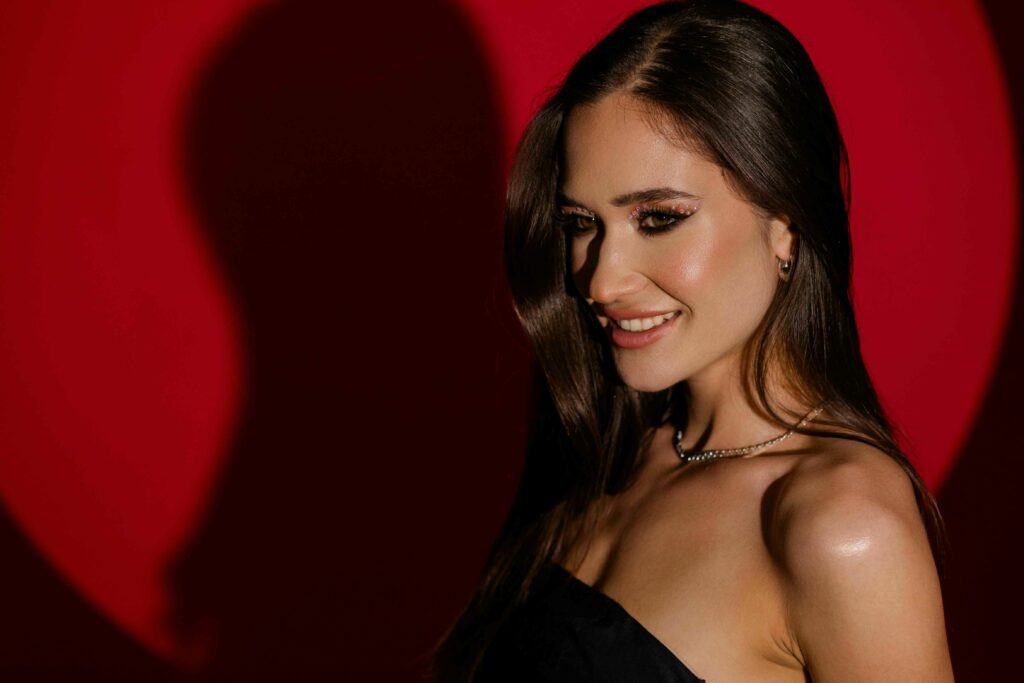
Capturing Natural Expressions
- The “genuine laugh” method
- What to do: Instead of instructing the subject to smile, prompt with a humorous story or a personal memory that sparks real joy.
- Why it works: Authentic laughter engages both the eyes and mouth, resulting in more genuine expressions. Often, the best moments occur just before or after the laugh.
- What to do: Instead of instructing the subject to smile, prompt with a humorous story or a personal memory that sparks real joy.
Posing Guide
After the Shoot – Selection, Editing, and Delivery Workflow
Picking the shots
Woman portrait sessions often generate 200-500 images, with multiple variations of similar poses. Your culling process should prioritize images where she looks confident, comfortable, and authentically beautiful. Look for shots with sharp eyes, natural expressions, and flattering body angles.
This is where Aftershoot's AI culling becomes invaluable. Instead of spending hours comparing nearly identical poses to find the one where her smile looks most genuine, the AI can group similar shots and highlight the best expressions and sharpness automatically. You can set the cull-to-target feature to deliver exactly the number of images promised to your client — say 25 final edited portraits from a 300-image session.
Editing Workflow and Style Consistency
Woman portraits require careful post-processing that enhances natural beauty without creating an artificial look. Focus on even skin tones, bright eyes, and colors that complement her skin tone. Avoid over-smoothing skin —texture should remain visible for authenticity.
Aftershoot's AI editing learns your specific style for woman portraits, applying consistent skin tone adjustments, eye brightening, and color grading across the entire session. This ensures every portrait maintains your signature style while adapting to different lighting conditions throughout the shoot.
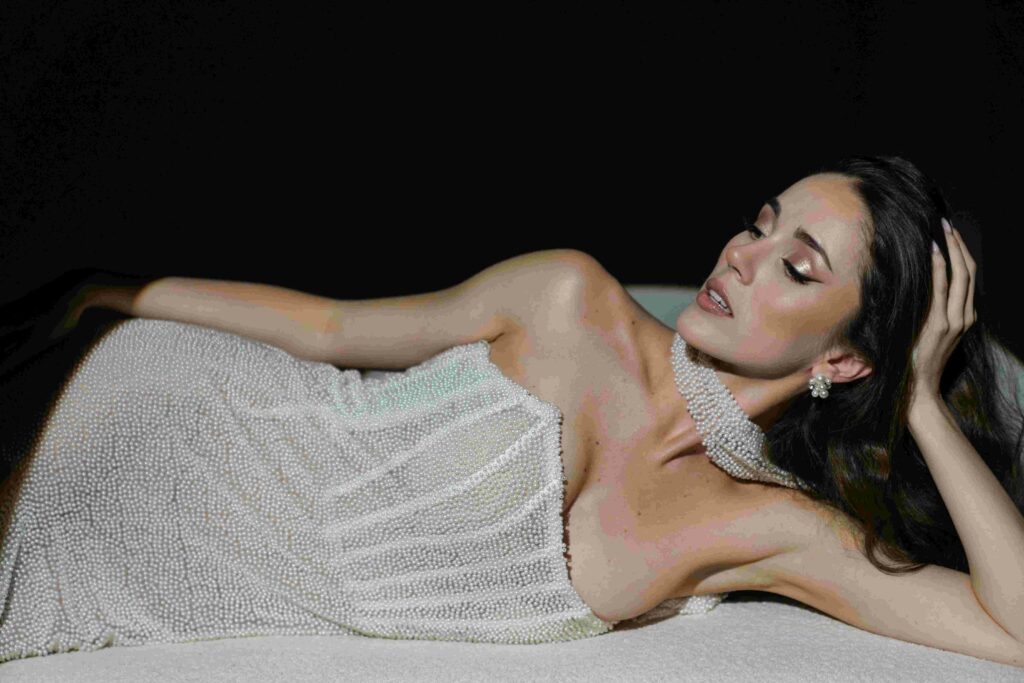
Subtle, Natural Retouching
Don't go overboard with retouching. Subtle retouching can work wonders, such as the skin, body, and background distractions (if any). We recommend a hybrid approach wherein you use Aftershoot's AI Retouch to complete your repetitive cleanup and add your final finesse in Photoshop. Works wonders if you ask me!
Client Gallery and Delivery Experience
Present the final gallery in a way that makes her feel celebrated. Write personalized captions for favorite images, highlighting what makes each one special. Deliver within your promised timeline — consistency in delivery builds trust and referrals in this genre.
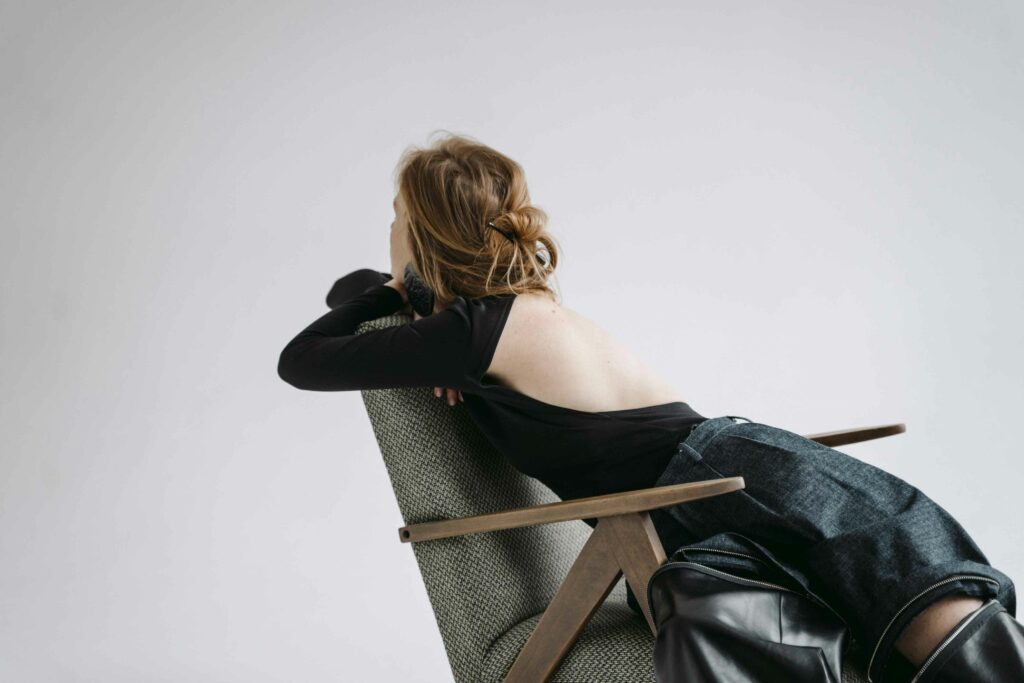
Post-Processing Workflow for Woman Portrait Photography
Popular Editing Aesthetics in This Genre
Bright and airy style remains the most requested approach for woman portraits, featuring lifted shadows, soft highlights, and clean, contemporary color grading. This style emphasizes natural beauty and works well for personal branding and lifestyle portraits.
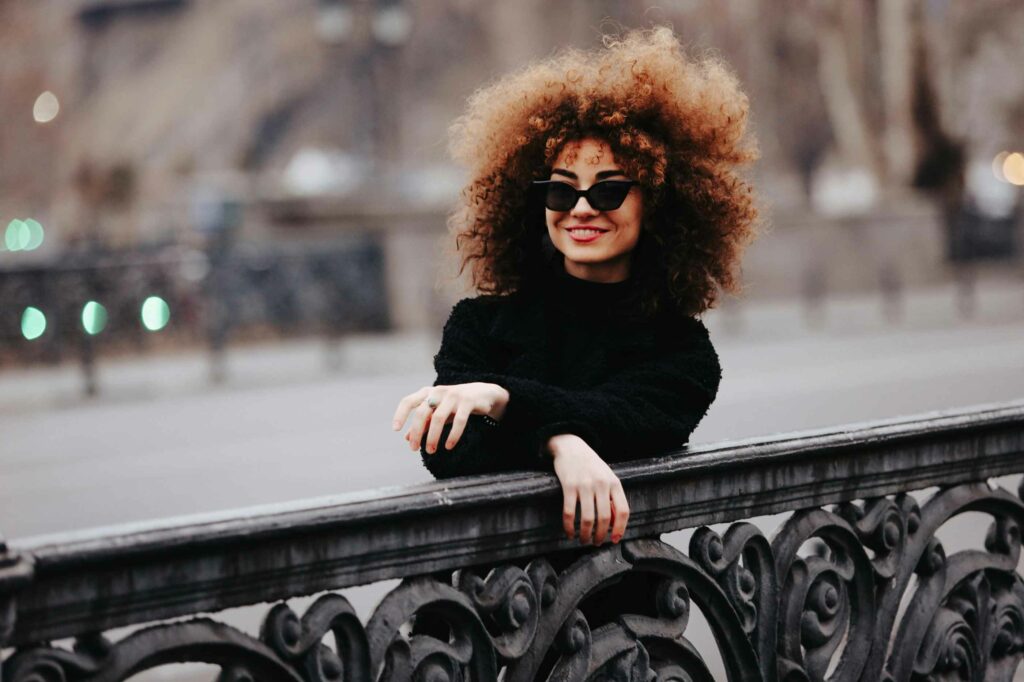
Film-inspired editing with subtle grain and muted tones appeals to clients wanting a timeless, artistic feel. This approach works beautifully for fine art portraits and creative sessions. Check out some film-inspired AI styles in Aftershoot's marketplace for starting points.
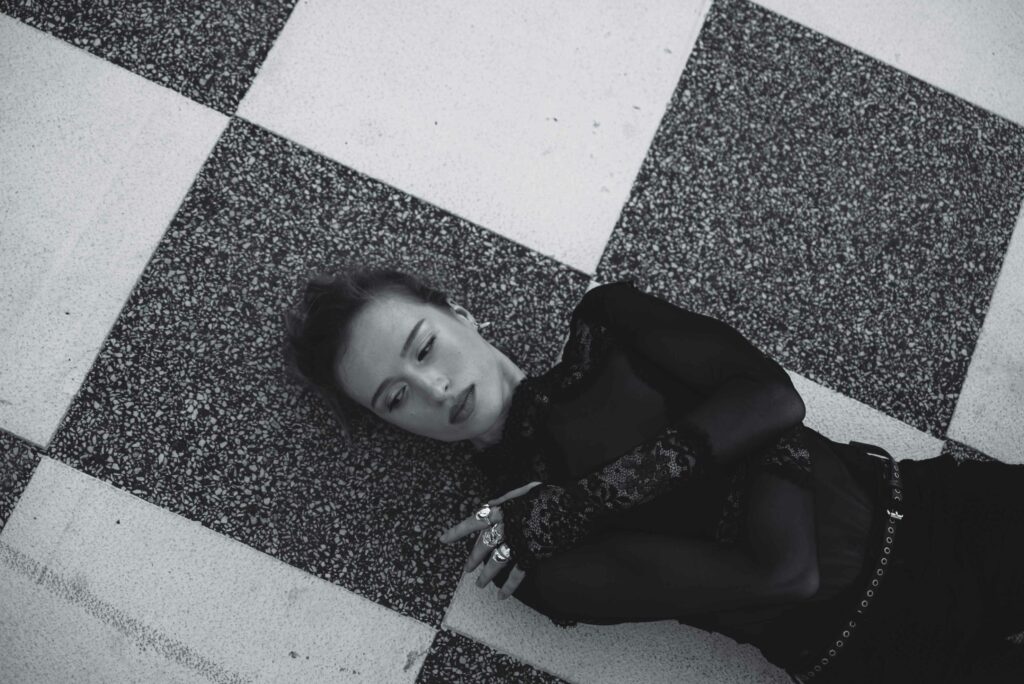
Bold and moody processing with deeper shadows and rich colors suits dramatic portraits and evening sessions, but requires careful attention to maintaining flattering skin tones.
Editing Consistency Tips
Start with global adjustments — exposure, white balance, and basic tone curve before moving to skin-specific edits. Create a custom preset or use Aftershoot's AI profiles trained on your woman portrait editing style to maintain consistency across varied lighting conditions.
Many photographers in the r/portraitphotography community emphasize the importance of this systematic approach. The general consensus is that your editing workflow should be as consistent as your shooting technique — clients notice when images in the same gallery have different feels.
Color Grading & Skin Tone
Woman portraits require careful attention to skin tone accuracy across different lighting conditions. Warm, golden tones generally flatter most skin types, but avoid pushing colors so far that they look unnatural.
The key is creating consistent skin tone treatment while allowing for natural variation. Some clients have cooler undertones, others warmer. Your editing should enhance their natural coloring rather than forcing a one-size-fits-all approach.
Retouching Depth and Philosophy
Modern woman portrait retouching focuses on enhancement over transformation. Remove temporary blemishes, soften harsh shadows, and brighten eyes, but preserve skin texture and natural features. The goal is to make her look like the best version of herself, not like someone else entirely.
AI tools can handle the first pass of skin smoothing and blemish removal while maintaining natural texture —perfect for high-volume portrait sessions where manual retouching would be time-prohibitive.
How Much Do Woman Portrait Photographers Make?
- Headshot sessions:
- Small markets: $150–$500 per session
- Major metropolitan areas: $300–$1,200 per session
- Small markets: $150–$500 per session
- Personal branding sessions:
- $400–$1,500 for multi‑look packages, often including a styling consultation and extended galleries
- $400–$1,500 for multi‑look packages, often including a styling consultation and extended galleries
- Boudoir and empowerment portraits:
- $600–$3,000+ depending on market size and photographer experience
- $600–$3,000+ depending on market size and photographer experience
- Annual income potential:
- Established women’s portrait specialists in strong markets: $50,000–$150,000+ annually
- Top photographers in luxury markets: $200,000+ annually
- Established women’s portrait specialists in strong markets: $50,000–$150,000+ annually
Source: Professional Photographers of America (PPA) pricing surveys and r/WeddingPhotography community discussions on portrait pricing strategies.
Bringing Out More Than a Portrait
Success in women’s portrait photography comes from the experience you create. When you consistently deliver portraits that make women feel beautiful, confident, and authentically represented, you build more than a portfolio — you build a business that changes lives.
The technical skills matter, but the system behind them matters more. Your ability to build trust quickly, guide posing naturally, and deliver consistent results determines whether you're shooting occasional portraits or building a sustainable business around this specialty.
You don't need every lighting modifier or posing guide on the market. What you do need is a repeatable system— one that lets you walk into any session with a plan, and adapt to the unexpected. That's what sets great portrait photographers apart, and it's what Aftershoot is here to help you build.
Ready to streamline your woman portrait workflow? Try Aftershoot free for 30 days and see how AI assistance can help you deliver consistently beautiful results while reclaiming your time for what matters most — being behind the camera, not in front of a computer screen.
